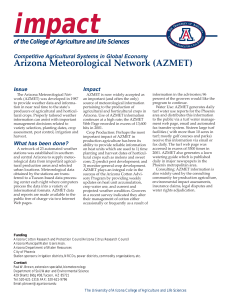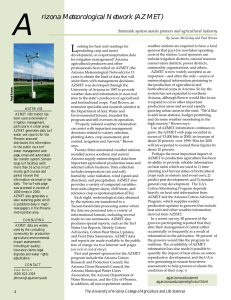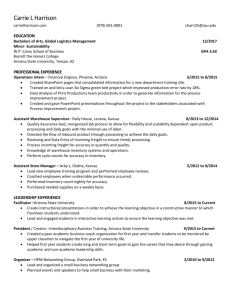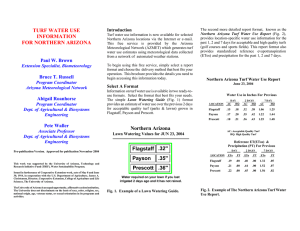impact of the College of Agriculture and Life Sciences Issue Impact
advertisement
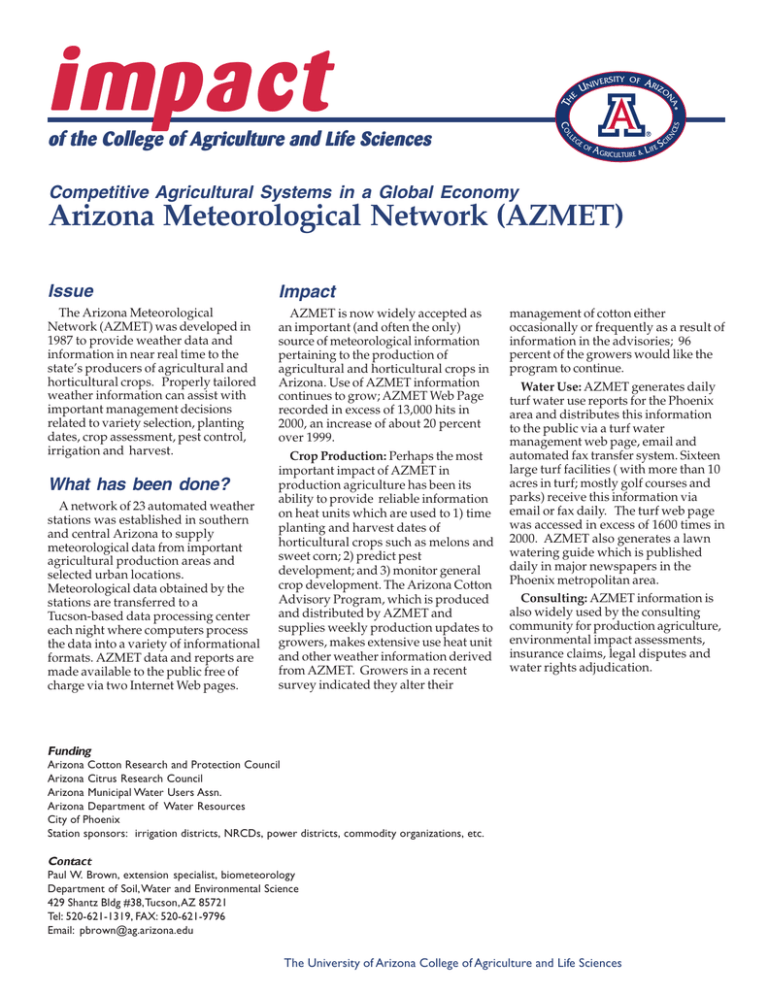
impact LL CES EG RIZ O EO EN CO of the College of Agriculture and Life Sciences UNI NA H Y VERSIT OF E FA GRICULTURE & LIF ES CI Competitive Agricultural Systems in a Global Economy Arizona Meteorological Network (AZMET) Issue Impact The Arizona Meteorological Network (AZMET) was developed in 1987 to provide weather data and information in near real time to the state’s producers of agricultural and horticultural crops. Properly tailored weather information can assist with important management decisions related to variety selection, planting dates, crop assessment, pest control, irrigation and harvest. AZMET is now widely accepted as an important (and often the only) source of meteorological information pertaining to the production of agricultural and horticultural crops in Arizona. Use of AZMET information continues to grow; AZMET Web Page recorded in excess of 13,000 hits in 2000, an increase of about 20 percent over 1999. Crop Production: Perhaps the most important impact of AZMET in production agriculture has been its ability to provide reliable information on heat units which are used to 1) time planting and harvest dates of horticultural crops such as melons and sweet corn; 2) predict pest development; and 3) monitor general crop development. The Arizona Cotton Advisory Program, which is produced and distributed by AZMET and supplies weekly production updates to growers, makes extensive use heat unit and other weather information derived from AZMET. Growers in a recent survey indicated they alter their What has been done? A network of 23 automated weather stations was established in southern and central Arizona to supply meteorological data from important agricultural production areas and selected urban locations. Meteorological data obtained by the stations are transferred to a Tucson-based data processing center each night where computers process the data into a variety of informational formats. AZMET data and reports are made available to the public free of charge via two Internet Web pages. management of cotton either occasionally or frequently as a result of information in the advisories; 96 percent of the growers would like the program to continue. Water Use: AZMET generates daily turf water use reports for the Phoenix area and distributes this information to the public via a turf water management web page, email and automated fax transfer system. Sixteen large turf facilities ( with more than 10 acres in turf; mostly golf courses and parks) receive this information via email or fax daily. The turf web page was accessed in excess of 1600 times in 2000. AZMET also generates a lawn watering guide which is published daily in major newspapers in the Phoenix metropolitan area. Consulting: AZMET information is also widely used by the consulting community for production agriculture, environmental impact assessments, insurance claims, legal disputes and water rights adjudication. Arizona Cotton Research and Protection Council Arizona Citrus Research Council Arizona Municipal Water Users Assn. Arizona Department of Water Resources City of Phoenix Station sponsors: irrigation districts, NRCDs, power districts, commodity organizations, etc. Paul W. Brown, extension specialist, biometeorology Department of Soil, Water and Environmental Science 429 Shantz Bldg #38, Tucson, AZ 85721 Tel: 520-621-1319, FAX: 520-621-9796 Email: pbrown@ag.arizona.edu The University of Arizona College of Agriculture and Life Sciences
